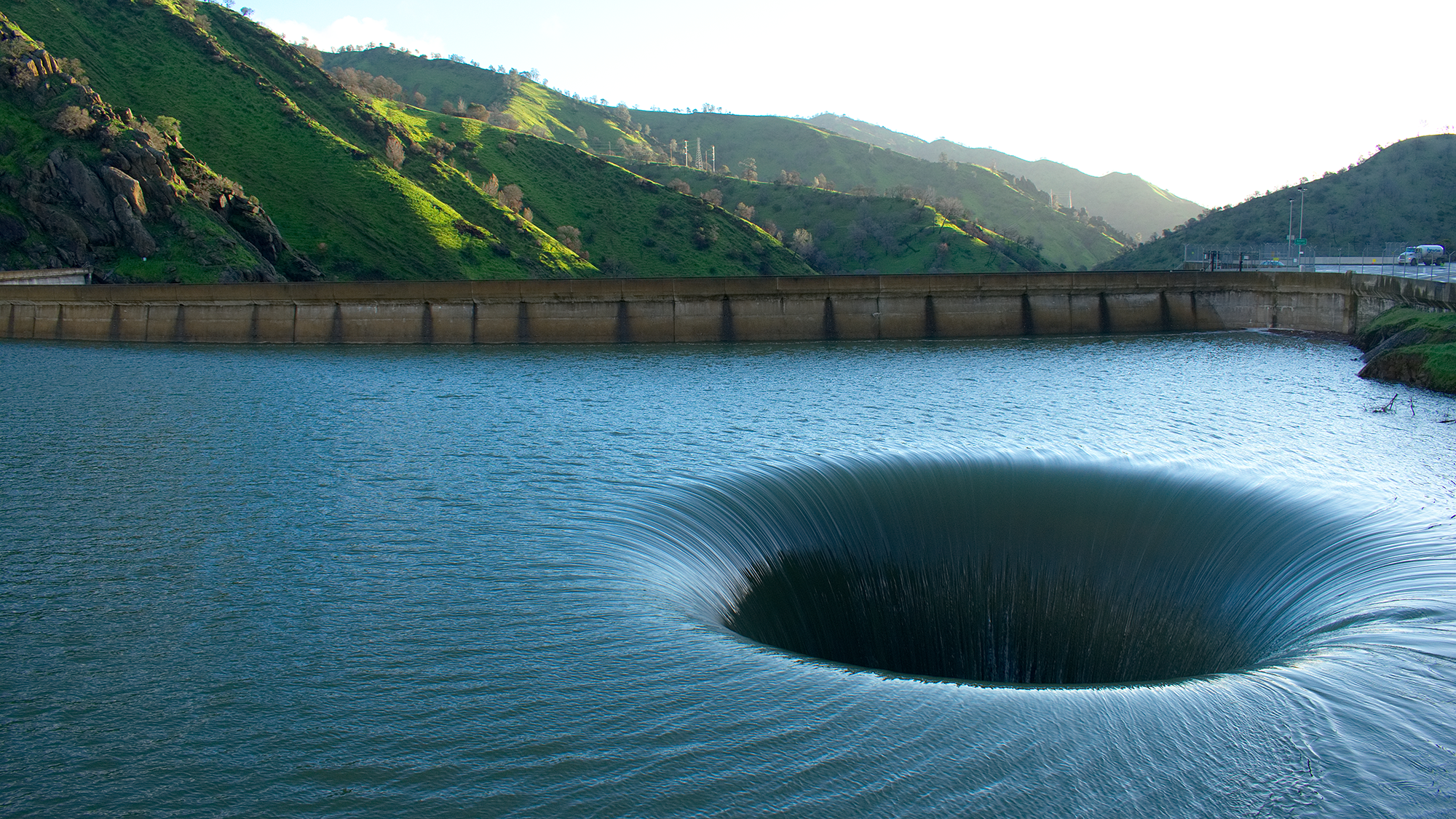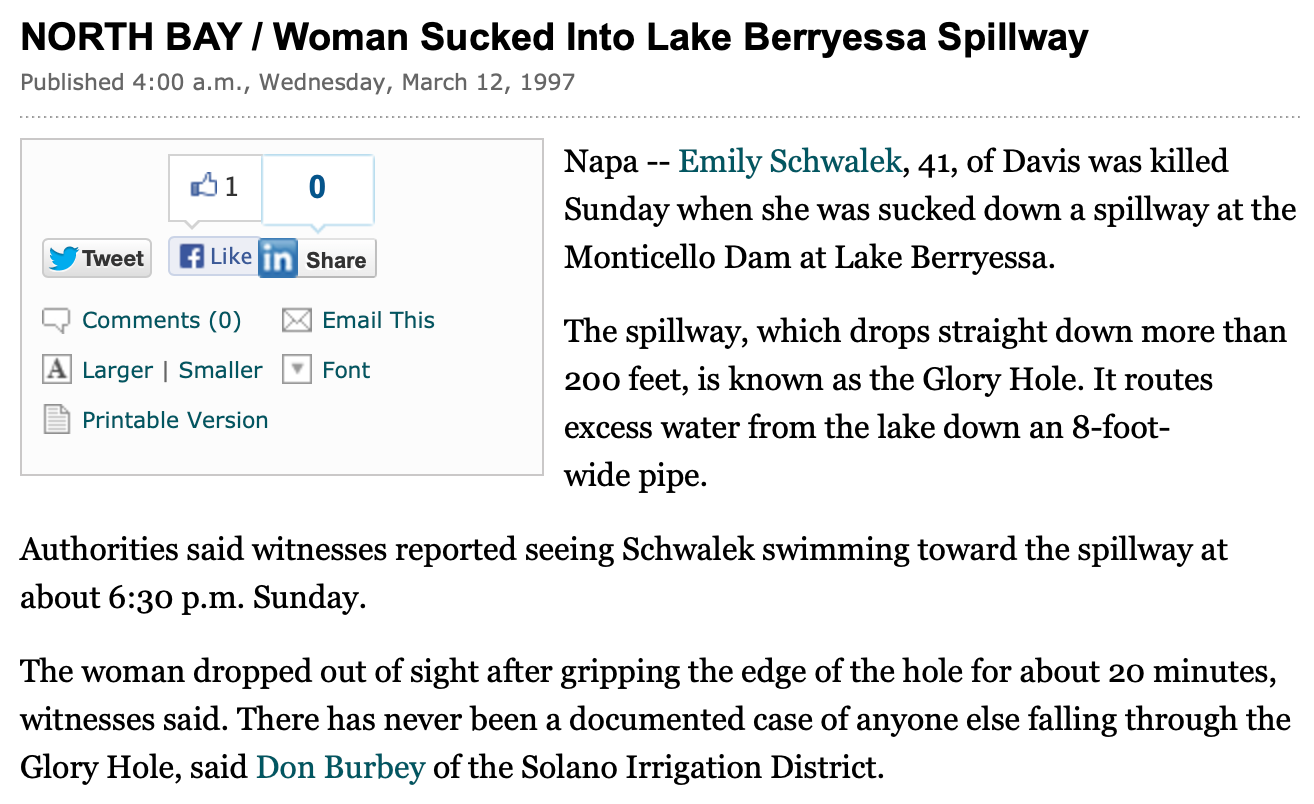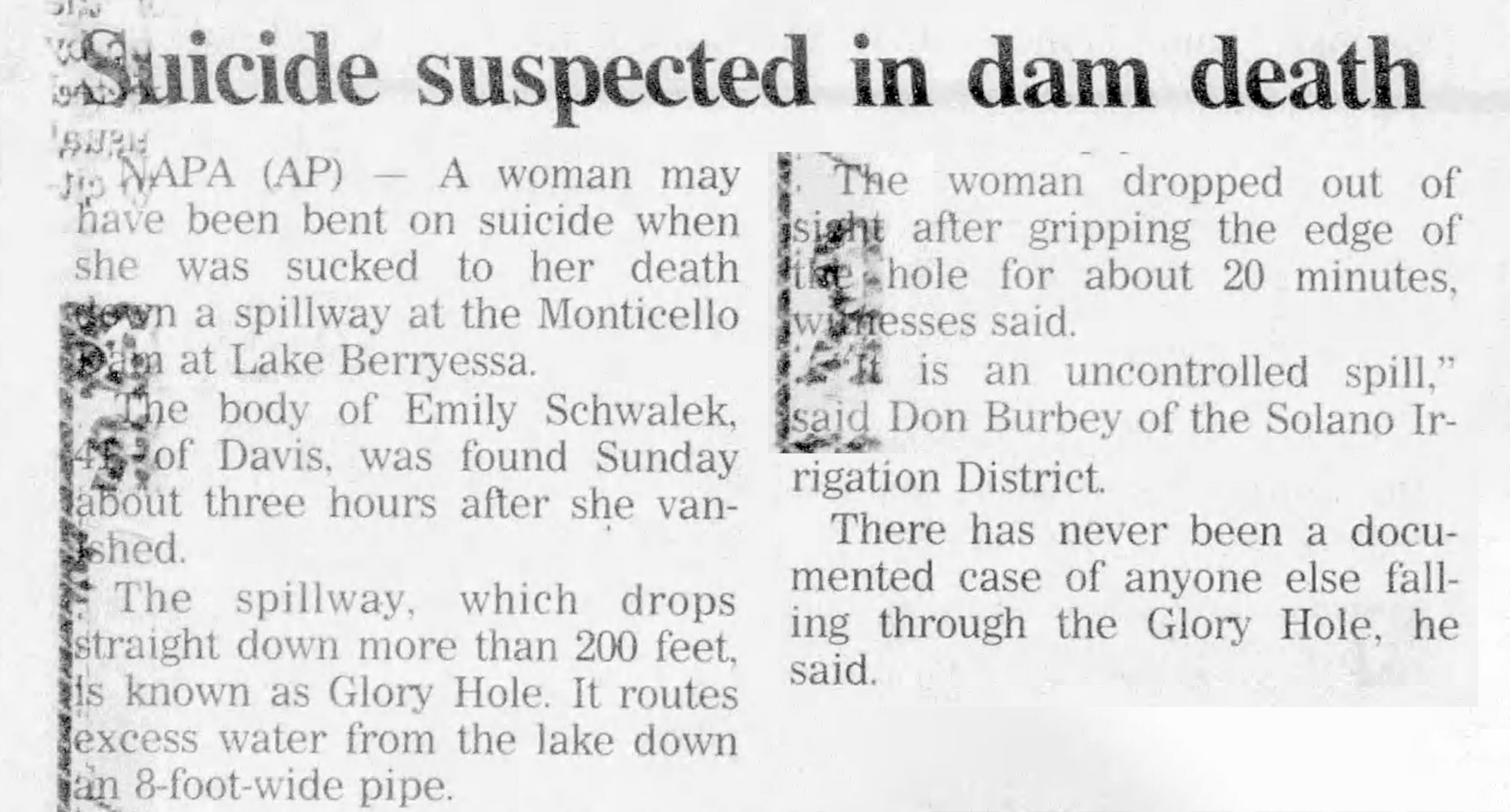Emily Schwalen and the Enigma of Lake Berryessa's Glory Hole
The Monticello Dam's Glory Hole, with its unnerving depth and swirling water, is an embodiment of the French concept of 'l'appel du vide', or 'the call of the void.'

The tranquil evening of March 9, 1997, at California's Lake Berryessa was disrupted by a tragic incident. Emily Terese Schwalen—misnamed as Schwalek in certain news reports—was a promising PhD candidate in agronomy at the University of California, Davis. Her life was cut short at the lake's infamous spillway, commonly known as the "Glory Hole."
Nestled in the Vaca Mountains forming the border between Napa and Yolo counties, Monticello Dam proudly houses the infamous Glory Hole. The dam, built in 1957 by the Bureau of Reclamation, is a concrete-arch structure with a height of 304 feet and a crest length of 1,023 feet. This dam creates Lake Berryessa, a reservoir spanning 15.5 miles in length and three miles in width when filled to capacity, with an extensive 165 miles of shoreline. It serves multiple purposes, providing irrigation and municipal water supply while also offering flood control.
Integral to the dam is the Glory Hole or officially, the Morning Glory Spillway. This morning-glory type spillway is an overflow safety feature that ensures the lake does not reach dangerous levels. Located approximately 200 yards from the dam, the spillway is 72 feet in diameter at the lake level with an initial vertical drop of 200 feet, tapering to 28 feet at the exit, with the entire spillway pipe extending about 700 feet. When water levels rise more than 15.5 feet above the Glory Hole, water starts flowing into the spillway, which can drain an impressive 48,400 cubic feet per second at peak capacity.

The Glory Hole creates a mesmerizing spectacle as the lake fills and water appears to vanish into an enormous abyss. The compelling sight, however, underscores the powerful forces at play when water enters it, as demonstrated by Emily's tragic demise and the unlikely survival of a waterfowl.
Born in Berkeley, California, on November 25, 1955, Emily Schwalen lived a life away from the public eye. She was the daughter of Clayton "Clay" Ralph Schwalen and Lena "Lee" Elizabeth (Canton) Schwalen. Her father's professional commitments with Kaiser Engineers led the family to various corners of the world, from São Paulo, Brazil, to Middletown, Ohio, and even Ghana. In 1981, Emily held a position as a Youth Employment Training Instructor at Harbor High School in Santa Cruz, California.

Online narratives depict a harrowing scene on the ill-fated Sunday evening of March 9, 1997. Emily, known as an accomplished swimmer, was reportedly seen near the Monticello Dam at Lake Berryessa around 6:30 p.m. With the lake's water level at a high, the Glory Hole exerted a formidable downward pull. Despite her desperate attempts to escape this pull, Emily was drawn irresistibly towards the spillway. In a struggle against time and nature, she managed to cling onto the spillway's edge for an excruciating 20 minutes. Rescue efforts were severely hampered by the powerful flow of water and the remote design of the spillway. Tragically, by the time help arrived, Emily was no longer in sight, having been swept into the spillway. Her body was later recovered downstream. The extent to which these details have been embellished or altered over time as part of the internet discussion remains uncertain, as this narrative can't be wholly corroborated by the scant news reports available.

The media narrative around this incident unfolded in a curious and somewhat inconsistent way. Initial coverage by the Napa Valley Register on March 10, 1997, portrayed the event as a suicide, noting that the water was not flowing over the spillway at the time, necessitating that Emily climbed onto it before her fatal plunge. However, a subsequent article in the Record Searchlight on March 11, 1997, maintained the suicide narrative but adjusted the water level details, suggesting the spillway was overflowing. This piece also introduced the dramatic element of Emily clinging to the edge of the spillway for twenty minutes before succumbing to the pull of the water below. Strangely, the final notable piece from SFGate on March 12, 1997, from which much of the internet-based narrative seems to draw, omits any reference to suicide entirely. Both the Record Searchlight and SFGate articles also contain several inaccuracies regarding the technical aspects of the Glory Hole.Whether it was an unfortunate swimming incident or a case of suicide, Emily's tale intertwines with the chilling allure of the Glory Hole.

Over two decades later, in 2019, a cormorant's encounter with the Glory Hole drew attention. Captured in a viral video, the bird drifted calmly before being swept into the drain. Against all odds, the bird emerged unscathed, its survival attributed to an air pocket in the tunnel during high flows, its light body mass, and ability to tuck its wings. Notably, there is no video evidence of its escape, only of its entrance into the spillway. This remarkable incident added to the Glory Hole's mystique.
A cormorant's encounter with the Glory Hole
The Monticello Dam's Glory Hole, with its unnerving depth and swirling water, is an embodiment of the French concept of l'appel du vide, or 'the call of the void.' This phenomenon refers to the paradoxical, fleeting urge some individuals experience to leap into danger when confronted with heights or similarly perilous situations. It's as if the spillway's profound abyss resonates with the human psyche's more enigmatic and disturbing corners. Emily Schwalen's tragic story, irrespective of the exact circumstances surrounding her death, serves as a potent reminder of this unnerving psychological phenomenon and the mesmerizing but deadly allure of the Glory Hole.
Whether the truth aligns with the narrative of an innocent swim turned tragedy or a purposeful leap into the abyss, Emily's story persists in the digital realm, perpetually linked to Lake Berryessa's enigmatic Glory Hole.
